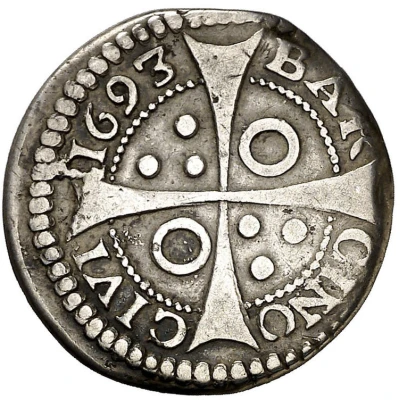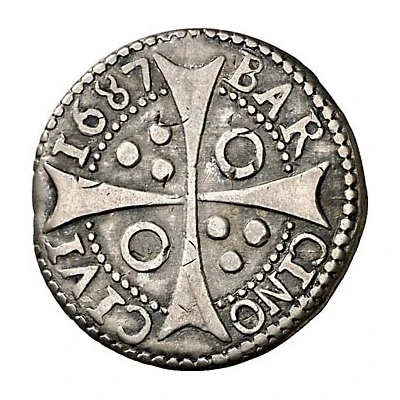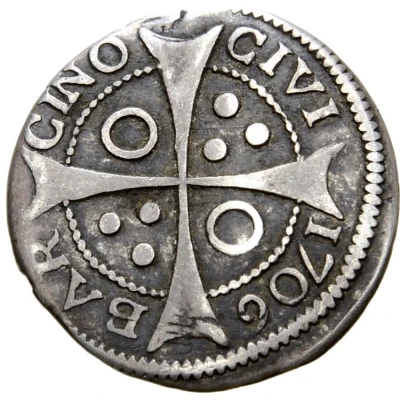


© Aureo & Calicó S.L., subastas numismáticas
Groat - Charles II bust variant
| Silver (.931) | 2.9 g | 20 mm |
| Issuer | Principality of Catalonia (Spanish States) |
|---|---|
| Count | Charles II (1665-1700) |
| Type | Standard circulation coin |
| Years | 1693-1698 |
| Value | 1 Groat (3⁄20) |
| Currency | Libra |
| Composition | Silver (.931) |
| Weight | 2.9 g |
| Diameter | 20 mm |
| Shape | Round (irregular) |
| Technique | Hammered |
| Demonetized | Yes |
| Updated | 2024-10-07 |
| Numista | N#110656 |
|---|---|
| Rarity index | 90% |
Reverse
Long cross divides legend, annulet in second and third angles, three bezants in first and fourth angles. Legend around, between beaded circles.
Script: Latin
Lettering: BARCINO CIVI 1693
Translation: City of Barcelona
Interesting fact
One interesting fact about the Standard circulation coin Groat - Charles II (bust variant) 1693-1698 from Principality of Catalonia (Spanish States) made of Silver (.931) weighing 2.9 g is that it was minted during a time of great economic and political change in Spain. The coin was issued during the reign of Charles II, who was the last Habsburg king of Spain and ruled from 1665 to 1700. During his reign, Spain was facing significant economic challenges, including inflation and a decline in trade, which led to a shortage of coinage. To address this issue, the Spanish government introduced a new coinage system in 1693, which included the Groat coin. The coin was made of silver and had a value of 4 reales, which was a significant denomination at the time. Despite the economic challenges, the Groat coin remained in circulation until 1700, when Charles II died and was succeeded by Philip V, who introduced a new coinage system. Today, the Groat coin is a rare and valuable collector's item, highly sought after by numismatists.



